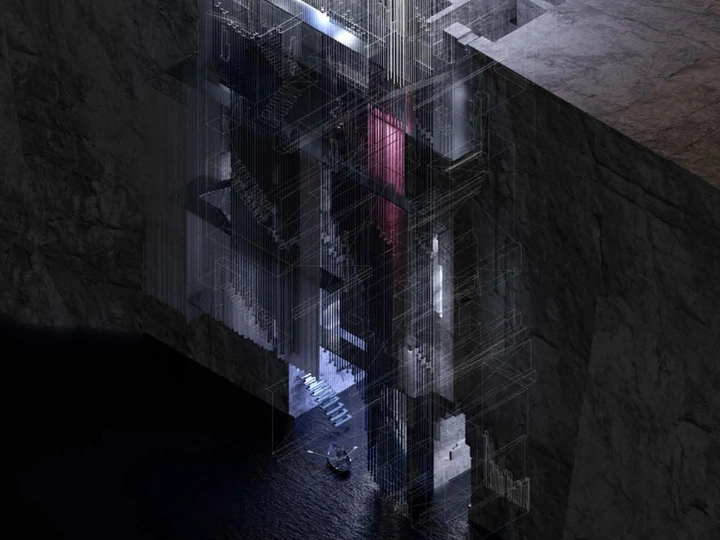Deep Fragmentation

I am a Part 2 Architectural Assistant from Ireland, currently based in Edinburgh, Scotland.
I earned my Master’s in Architecture with Distinction from University College Cork, Ireland and my final thesis project was shortlisted for the EU Mies Awards Young Talent 2025.
I have worked in practices in Cork, Edinburgh and New York, gaining experience across a wide range of residential, commercial, and institutional projects. I also worked as a university researcher on an EU Green Deal-affiliated initiative, exploring circular design principles and deepening my passion for sustainability in the built environment.
How do we anticipate the climate crisis? In an age when the unpredictability of nature is prevalent - how can we continue the momentum of comprehending the crisis at hand? This project proposes a climate crisis research centre that uses the explorative thinking and writing techniques of the Beat Writers through its architecture, methodology and function. The centre aims to predict and better anticipate the ever-changing effects the climate crisis has on the Bay.
‘Deep Fragmentation’ as a methodology was developed through a range of experimental design and research techniques. It focuses on a non-linear way of working. Through cyclical processes of cutting and overlaying, assemblages are created, forming abstract explorations of place, space, time and journey. These shifting visuals and unpredictable formations reflect the volatility of the site itself: Naples, a city shaped by geological instability and historical tension.
The methodology began with an unfolding sketchbook, holding fragments collected from travels around the Bay of Naples. One of the Bay's islands, La Gaiola, is known as a Cursed Island - as ownership seems to portend misfortune. One owner was John Paul Getty, who was infamously sued by his own son - as predicted by Beat Writer William S. Burroughs during a 'cut-up' experiment.
Burroughs’ 'cut-up' technique extends to both the architectural and programmatic development of the project. Burroughs believed that ‘when you cut into the present, the future leaks out’ - giving the method a prophetic capacity.
The project’s architectural intervention, The Registry, actively engages with the Bay’s past, present and future water conditions. It archives coring samples and analyses the Bay through a series of cut-out thinking and writing spaces - whilst re-registering the cliff face it occupies. It aims to highlight the ecological and environmental precarity of the terrain - an area deeply impacted by seismological shifts and marine pollution.